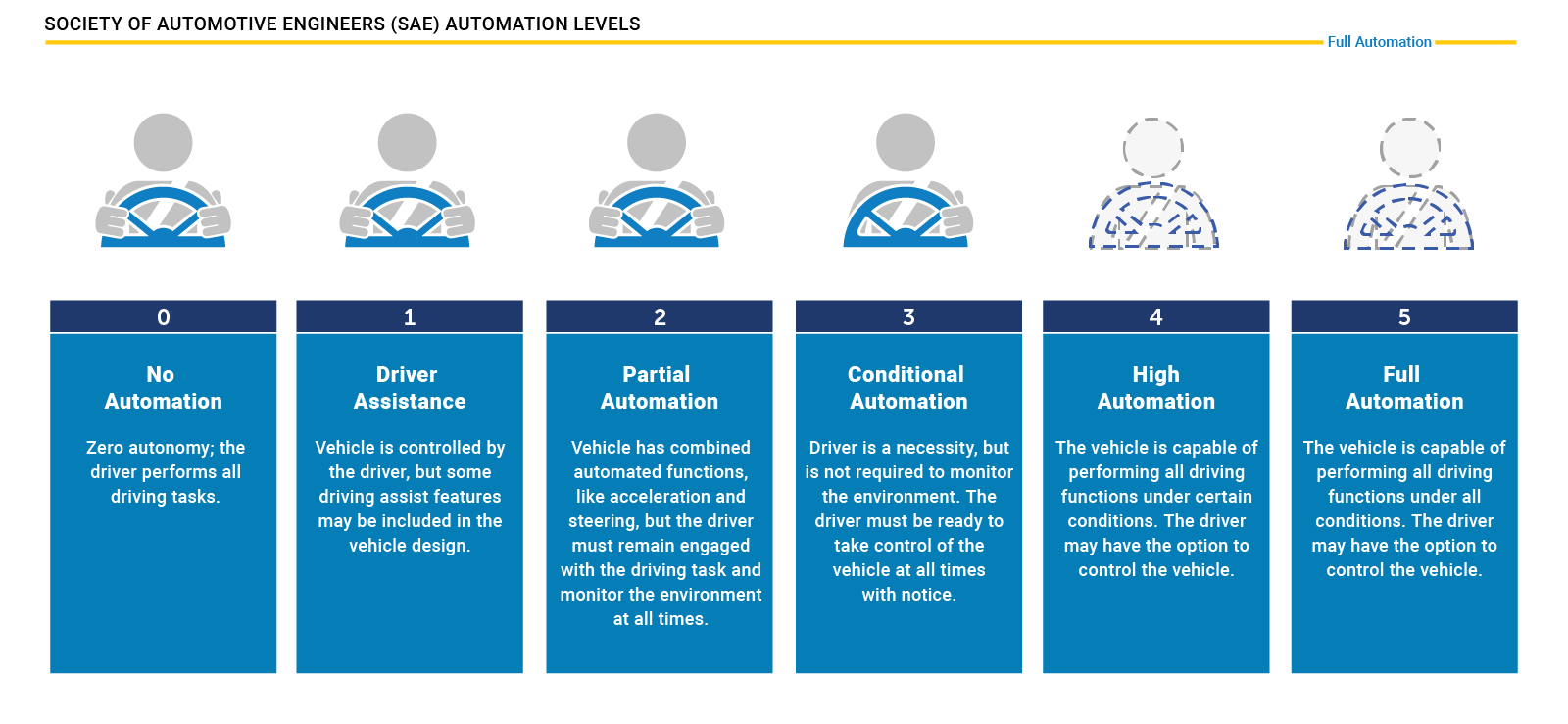Self-Driving Cars: Everything You Need to Know
Self-driving cars are also known as driverless or autonomous cars. One of the main functions of these vehicles is that they don’t require human input to work. Self-driving cars come with various sensors, including cameras, radar, and lidar technology that help generate detailed maps of the car’s surroundings. These features help control the car’s speed, steering, and braking when required.
Self-driving cars are rapidly evolving and will tend to become the future of driving in no time. Many manufacturers are investing in this technology to develop the best possible features and install high-quality safety features. Some of the features of self-driving cars are already being used in the most popular top-end vehicles, which include intelligent parking assist, adaptive cruise control, and so on. These vehicles are believed to reduce road accidents and provide better transportation options for people with disabilities.
Though the idea of these autonomous cars is quite fancy, the latest development in this sector still needs to be improved. To understand this better, the Society of Automotive Engineers has defined six levels of autonomy, i.e. from fully manual to fully autonomous. These levels are discussed in detail below:
Level 0:
At this level, no driving automation is included, i.e., the driver needs to have complete control of the vehicle. However, the warning signals are still displayed on the dashboard when something goes wrong with the car, so the driver needs to be aware of this.
Level 1:
Here the vehicle is equipped with driver assistance systems that can control acceleration, steering, and braking, these features are known as adaptive cruise control and lane-keeping assist. The driver needs to be alert and prepared to take control of the vehicle at any given time.
Level 2:
These vehicles are similar to level 1 vehicles but have additional driver assistance features, such as automatic lane change assist and traffic jam assist. These features can make driving easy and safe, but the driver will still need to stay attentive, as it provides only partial automation.

Level 3:
At this stage, the vehicle is conditionally autonomous, i.e., it can take control without error in good weather and low traffic conditions. However, the driver must be positioned in the driver's seat and be prepared to take control at any time.
Level 4:
Level 4 vehicles come with high automation; which means the car is able to drive on its own in all conditions. However, the driver can still take over control at any time. Some countries, including the United States, China, Germany, Japan, and Singapore, have legalized the use of level 4 vehicles for ride-sharing companies and other businesses.
Level 5:
The level 5 vehicles come under the highest level of automation; the car can drive itself in all conditions without a driver and does not require any human input. These are known to be the complete driverless cars.
Currently, in the UK, level 3, 4, and 5 are not yet legal as it is not yet considered safe enough to be on public roads. However, there are a lot of conversations going around about making level 3 vehicles to be allowed on UK roads soon.
Pros of Self-Driving Cars:
Increase in Productivity of Human Life:
Self-driving cars have the potential to make transportation more efficient and convenient for everyone. As self-driving cars do not require a human driver, passengers can use the time they would have spent driving to do other things, such as checking or responding to emails, reading a book, having a conversation with their children when dropping them to school, or taking a nap. Additionally, self-driving cars can benefit people with disabilities by allowing them to get around and reach their workplace without having to depend on others.
Improved Efficiency:
Self-driving cars are equipped with advanced technology enabling the detection and analysis of a comprehensive 360-degree view of their surroundings. This intelligent system allows our vehicles to anticipate and respond to the movements of other road users, resulting in enhanced traffic management and a significant reduction in the likelihood of accidents.
New Jobs:
The development and production of self-driving cars have the potential to create new jobs across multiple sectors, including manufacturing, maintenance, and software development.

Challenges of Self-Driving Cars:
Safety:
As these vehicles are still under development, there can be lots of safety risks associated with them. One area of concern lies in the vast amount of data collected by these vehicles as they constantly monitor their surroundings and passengers. Furthermore, as this technology is connected to the internet, there is a high risk of hacking and malicious attempts that can lead to data breaches compromising the safety of the people using it.
High-Costs:
Building the necessary infrastructure for self-driving cars to operate effectively comes with significant costs. This includes equipping roads with sensors and other advanced technology, as well as establishing charging infrastructure. Additionally, extensive testing is essential to ensure the safety of users, which further drives up costs. This can pose a challenge to widespread adoption, as the higher costs may limit the accessibility of this technology for many individuals.
Legal and Regulatory Considerations:
One of the critical legal considerations that need to be made would be in regards to the issuance of the license to operate these autonomous cars, as during negative circumstances there should be at least one person in the vehicle to know how to drive and take over when necessary. Additionally, insurance policies will have to adapt to many changes, for example, if there is any malfunction caused, the manufacturer may want to take up the responsibility.
We hope our article has provided you with valuable insights into the world of self-driving cars. However, if you require any further information or have any questions, please don’t hesitate to contact us.
Tags: *Car_News *Self_Driving_Cars *Driverless *Autonomous_Car *Car_Revolution


